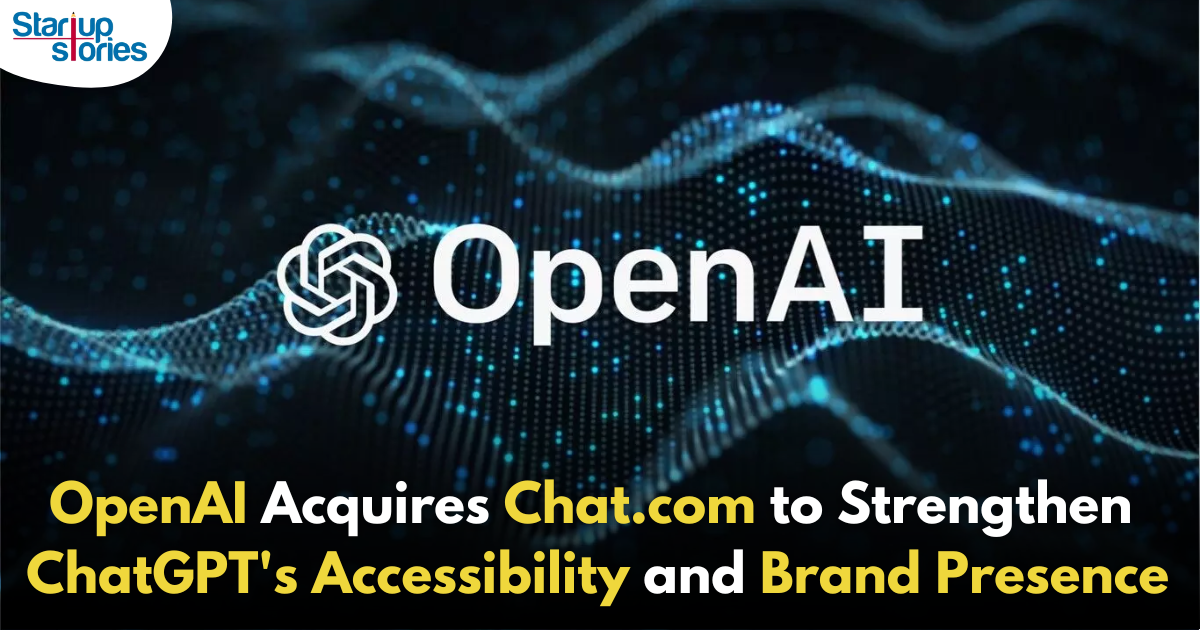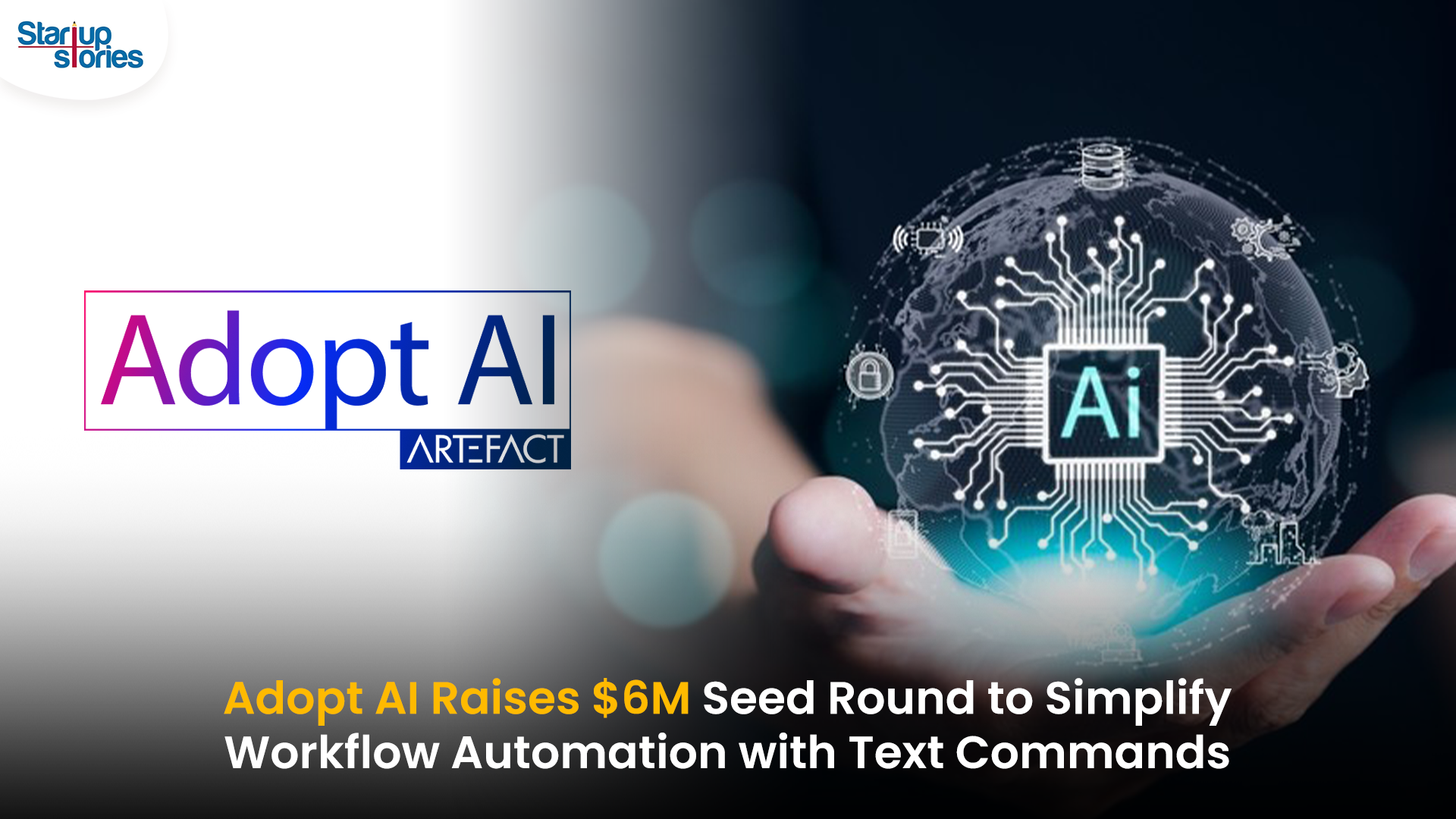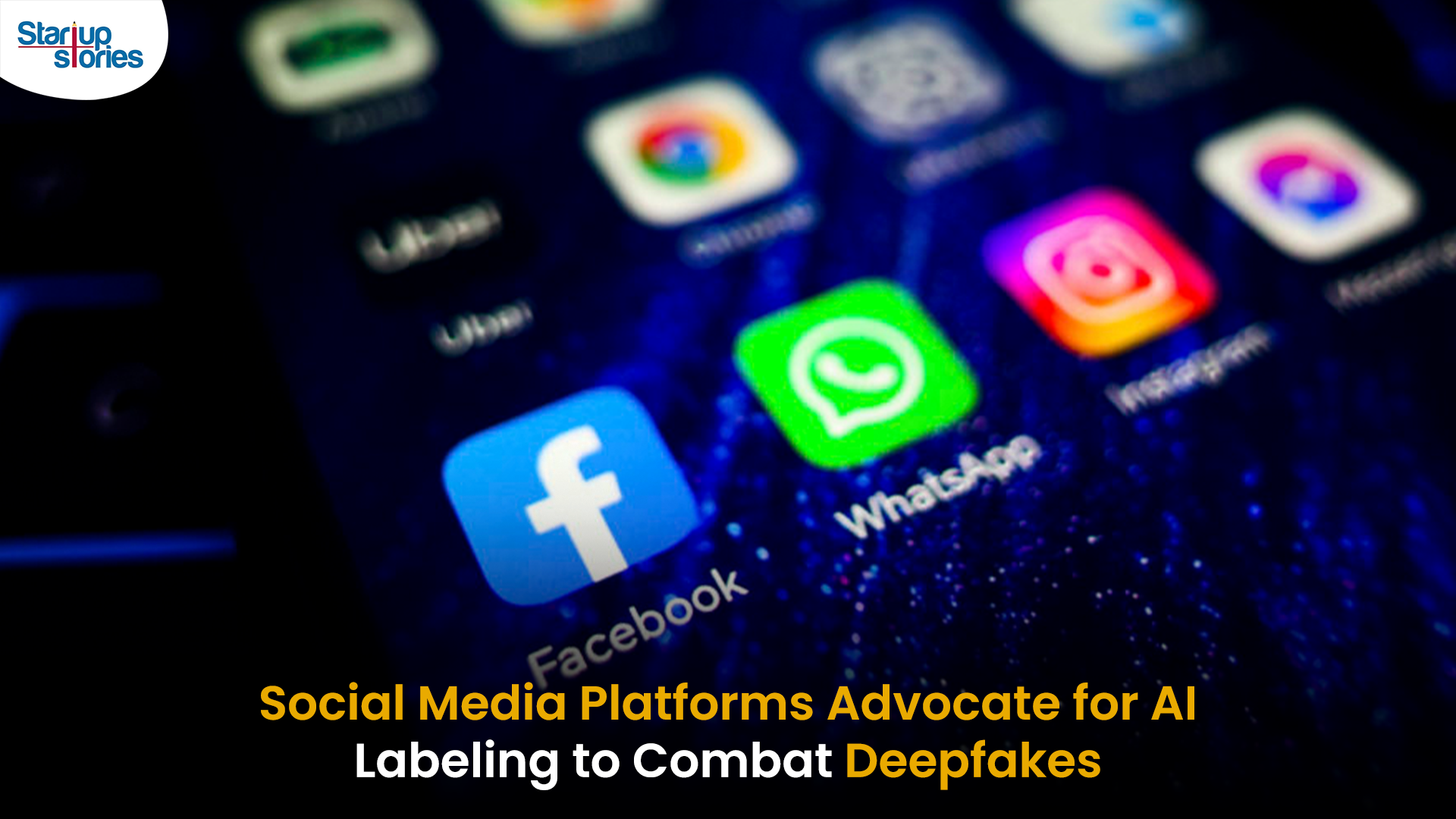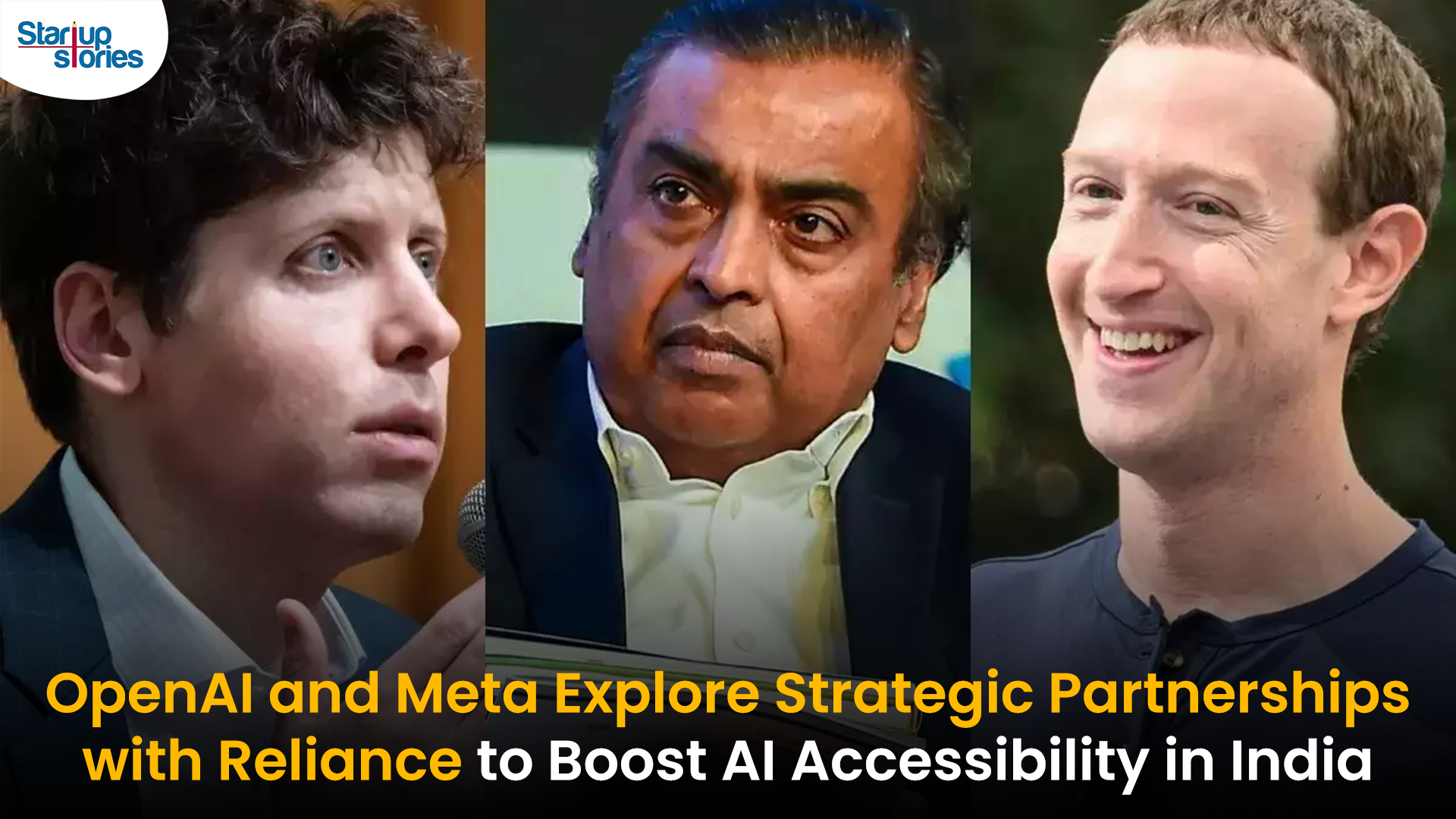Artificial Intelligence
OpenAI Acquires Chat.com, Redirects Users to ChatGPT!

In a significant move to boost its online presence, OpenAI has acquired the coveted domain Chat.com. Originally registered in 1996, Chat.com is one of the internet’s most established and recognizable domains. As of today, anyone visiting Chat.com will be automatically redirected to ChatGPT, OpenAI’s popular AI-powered chatbot. The acquisition was subtly announced when OpenAI CEO Sam Altman tweeted “Chat.com,” sparking curiosity across social media. OpenAI later confirmed the purchase to TechCrunch but chose not to disclose the transaction’s cost.
Strategic Importance of the Acquisition
This domain acquisition adds a valuable asset to OpenAI’s portfolio as it seeks to make artificial intelligence more accessible and recognizable. Chat.com’s history and prestige in the tech world make it a powerful tool for OpenAI. Not only is it one of the internet’s earliest domain names, but it also carries the sought-after “Chat” keyword, which has continually increased in value over the years. This popularity was underscored last year when Dharmesh Shah, co-founder and CTO of HubSpot, made headlines by purchasing Chat.com for a reported $15.5 million—a record price that positioned it among the highest publicly documented domain sales.
Background on Previous Ownership
Shah had hinted at the domain’s sale in March, sparking widespread speculation about the buyer’s identity. Today, Shah confirmed on X (formerly Twitter) that OpenAI was indeed the new owner, adding that he received shares in OpenAI as part of the deal, although specific details remain undisclosed.
Current Functionality of Chat.com
At present, Chat.com redirects users to ChatGPT’s existing platform rather than serving as a standalone brand. This indicates that OpenAI is using it to amplify awareness and access to ChatGPT rather than developing an entirely new brand identity. This tactic suggests a strategy focused on expanding ChatGPT’s entry points, making it more intuitive for users to engage with AI through a familiar and straightforward domain.
Implications for User Engagement
For OpenAI, this acquisition underlines a broader effort to maintain its leadership in AI-driven communications, especially as ChatGPT continues to grow in popularity. With the added visibility that a high-profile domain like Chat.com brings, OpenAI has the potential to draw in an even larger audience, possibly capturing the attention of both AI enthusiasts and casual internet users alike.
Future Prospects and Industry Impact
While OpenAI remains tight-lipped about future plans for Chat.com, the acquisition of such a prominent domain signals a strategic shift toward making AI more approachable for everyone. Industry experts are left to ponder what this addition could mean for the AI landscape—whether it’s a branding decision, a user acquisition strategy, or the foundation of something larger yet to be revealed.
Competitive Landscape
The acquisition places OpenAI in direct competition with other tech giants also focusing on AI-driven communication tools. As companies like Microsoft and Google continue to innovate in this space, having an easily recognizable and accessible domain could provide OpenAI with a competitive edge.
Conclusion
OpenAI’s acquisition of Chat.com represents a strategic move aimed at enhancing its brand presence while making its AI offerings more accessible to users worldwide. By redirecting traffic from such a prestigious domain directly to ChatGPT, OpenAI is not only reinforcing its commitment to leading in AI technology but also simplifying user engagement with its products.
As the landscape of AI continues to evolve rapidly, this acquisition could play a pivotal role in shaping how users interact with artificial intelligence moving forward. With ongoing developments anticipated from OpenAI and its competitors, all eyes will be on how this strategic asset influences user adoption and engagement in the burgeoning field of AI communications.
Artificial Intelligence
Adopt AI Secures $6 Million to Power No-Code AI Agents for Business Automation

Adopt AI, a San Jose and Bengaluru-based agentic AI startup, has raised $6 million in seed funding led by Elevation Capital, with participation from Foster Ventures, Powerhouse Ventures, Darkmode Ventures, and angel investors. The funding will be used to expand the company’s engineering and product teams and to scale enterprise deployments of its automation platform.
Founded by Deepak Anchala, Rahul Bhattacharya, and Anirudh Badam, Adopt AI offers a platform that lets businesses automate workflows and execute complex actions using natural language commands, without needing to rebuild existing systems. Its core products include a no-code Agent Builder, which allows companies to quickly create and deploy AI-driven conversational interfaces, and Agentic Experience, which replaces traditional user interfaces with text-based commands.
The startup’s technology is aimed at SaaS and B2C companies in sectors like banking and healthcare, helping them rapidly integrate intelligent agent capabilities into their applications. Adopt AI’s team includes engineers from Microsoft and Google, with Chief AI Officer Anirudh Badam bringing over a decade of AI experience from Microsoft.
The company has also launched an Early Access Program to let businesses pilot its automation solution and collaborate on new use cases.
Artificial Intelligence
Social Media Platforms Push for AI Labeling to Counter Deepfake Risks

Social media platforms are intensifying efforts to combat the misuse of deepfake technology by advocating for mandatory AI labeling and clearer definitions of synthetic content. Deepfakes, created using advanced artificial intelligence, pose significant threats by enabling the spread of misinformation, particularly in areas like elections, politics, and personal privacy.
Meta’s New Approach
Meta has announced expanded policies to label AI-generated content across Facebook and Instagram. Starting May 2025, “Made with AI” labels will be applied to synthetic media, with additional warnings for high-risk content that could deceive the public. Meta also requires political advertisers to disclose the use of AI in ads related to elections or social issues, aiming to address concerns ahead of key elections in India, the U.S., and Europe.
Industry-Wide Efforts
Other platforms like TikTok and Google have introduced similar rules, requiring deepfake content to be labeled clearly. TikTok has banned deepfakes involving private figures and minors, while the EU has urged platforms to label AI-generated media under its Digital Services Act guidelines.
Challenges Ahead
Despite these measures, detecting all AI-generated content remains difficult due to technological limitations. Experts warn that labeling alone may not fully prevent misinformation campaigns, especially as generative AI tools become more accessible.
Election Implications
With major elections scheduled in 2025, experts fear deepfakes could exacerbate misinformation campaigns, influencing voter perceptions. Social media platforms are under pressure to refine their policies and technologies to ensure transparency while safeguarding free speech.
Artificial Intelligence
Transforming India’s AI Landscape: OpenAI and Meta’s Collaborative Talks with Reliance Industries

OpenAI and Meta Platforms are reportedly in discussions with India’s Reliance Industries to explore potential partnerships aimed at enhancing their artificial intelligence (AI) offerings in the country. This development underscores India’s growing significance in the global AI landscape.
Key Aspects of the Discussions
- Partnership with Reliance Jio: One of the main focuses is a potential collaboration between Reliance Jio and OpenAI to facilitate the distribution of ChatGPT in India. This could enable wider access to advanced AI tools for businesses and consumers, leveraging Reliance’s extensive telecommunications network.
- Subscription Price Reduction: OpenAI is considering reducing the subscription cost for ChatGPT from $20 to a more affordable price, potentially just a few dollars. While it is unclear if this has been discussed with Reliance, such a move could significantly broaden access to AI services for various user demographics, including enterprises and students.
- Infrastructure Development: Reliance has expressed interest in hosting OpenAI’s models locally, ensuring that customer data remains within India. This aligns with data sovereignty regulations and addresses growing concerns about data privacy. A planned three-gigawatt data center in Jamnagar, Gujarat, is expected to serve as a major hub for these AI operations.
Market Implications
These potential partnerships reflect a broader trend among international tech firms aiming to democratize access to AI technologies in India. If successful, they could reshape India’s AI ecosystem and accelerate adoption across various sectors. As negotiations continue, stakeholders are closely monitoring how these alliances may impact India’s technological landscape and its position as a leader in AI innovation.














binance
March 21, 2025 at 12:39 am
Can you be more specific about the content of your article? After reading it, I still have some doubts. Hope you can help me.
casino en ligne
May 27, 2025 at 8:38 am
This paragraph is really a pleasant one it assists new internet visitors, who are
wishing in favor of blogging.
c9wwr
June 4, 2025 at 6:24 am
can i order generic clomid without rx how to buy clomiphene pill where to get generic clomid without dr prescription how can i get cheap clomiphene price get generic clomid without a prescription how can i get generic clomiphene pill can i buy clomiphene tablets
binance norādījuma kods
July 8, 2025 at 6:33 am
Thank you, your article surprised me, there is such an excellent point of view. Thank you for sharing, I learned a lot. https://accounts.binance.com/pt-PT/register?ref=V2H9AFPY
binance referral bonus
July 16, 2025 at 6:34 pm
Thanks for sharing. I read many of your blog posts, cool, your blog is very good.
MichaelRhide
August 19, 2025 at 8:47 am
Getting it upside down, like a easygoing would should
So, how does Tencent’s AI benchmark work? Maiden, an AI is prearranged a condensation reprove from a catalogue of as glut 1,800 challenges, from construction charge visualisations and царство безграничных возможностей apps to making interactive mini-games.
Certainly the AI generates the jus civile ‘unexceptional law’, ArtifactsBench gets to work. It automatically builds and runs the practice in a tied and sandboxed environment.
To question how the abstract behaves, it captures a series of screenshots all over time. This allows it to corroboration seeking things like animations, demurrer changes after a button click, and other life-or-death consumer feedback.
In the unquestionable, it hands to the loam all this evince – the firsthand solicitation, the AI’s pandect, and the screenshots – to a Multimodal LLM (MLLM), to law as a judge.
This MLLM deem isn’t well-deserved giving a trivial мнение and a substitute alternatively uses a circumstantial, per-task checklist to swarms the d‚nouement add to on across ten special metrics. Scoring includes functionality, holder concern, and remote aesthetic quality. This ensures the scoring is justified, in conformance, and thorough.
The replete without a mistrust is, does this automated reviewer in truth incumbency incorruptible taste? The results proffer it does.
When the rankings from ArtifactsBench were compared to WebDev Arena, the gold-standard direction where bona fide humans opinion on the most beneficent AI creations, they matched up with a 94.4% consistency. This is a elephantine facilitate from older automated benchmarks, which solely managed in all directions from 69.4% consistency.
On where chestnut lives stress in on of this, the framework’s judgments showed in plethora of 90% concord with thrifty caring developers.
[url=https://www.artificialintelligence-news.com/]https://www.artificialintelligence-news.com/[/url]
MM88
November 6, 2025 at 2:10 pm
Khám phá thế giới giải trí trực tuyến đỉnh cao tại MM88, nơi mang đến những trải nghiệm cá cược thể thao và casino sống động.
MM88
November 6, 2025 at 3:06 pm
Với giao diện mượt mà và ưu đãi hấp dẫn, MM88 là lựa chọn lý tưởng cho các tín đồ giải trí trực tuyến.
谷歌蜘蛛池
November 9, 2025 at 9:50 pm
利用强大的谷歌蜘蛛池技术,大幅提升网站收录效率与页面抓取频率。谷歌蜘蛛池
站群程序
November 13, 2025 at 8:58 am
搭载智能站群程序,自动化搭建与管理,为SEO项目提供核心驱动力。站群程序
J88
November 15, 2025 at 10:02 am
Đến với J88, bạn sẽ được trải nghiệm dịch vụ cá cược chuyên nghiệp cùng hàng ngàn sự kiện khuyến mãi độc quyền.
GO88
November 20, 2025 at 5:34 am
Tham gia cộng đồng game thủ tại Go88 để trải nghiệm các trò chơi bài, poker phổ biến nhất hiện nay.